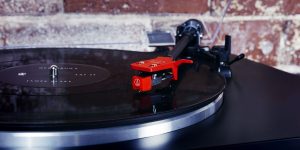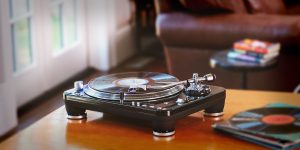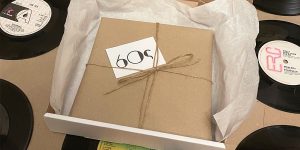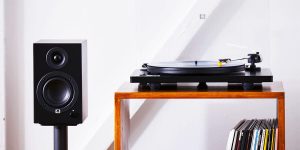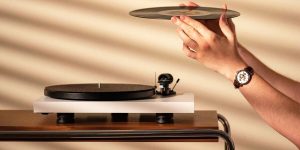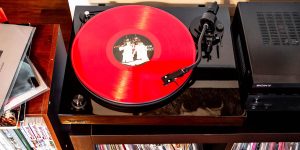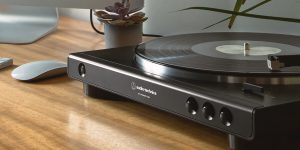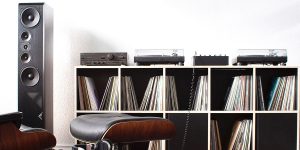The debate regarding manual vs automatic turntable has long been a topic of discussion. Each type offers a distinct approach to the vinyl listening experience, catering to different preferences and priorities. The choice between manual and automatic turntables plays a pivotal role in shaping one’s journey into the captivating world of vinyl.
In this article, I will explore the key differences, advantages, and considerations between manual and automatic turntables. Considering the nuances of sound quality, I aim to help you navigate the diverse world of turntables and find the perfect fit for your musical tastes and personal listening preferences.
Manual turntables

It is also known as the phonograph, a record player that requires manual operation to play the music stored on vinyl records. These turntables were popular before the rise of digital music formats and streaming services, and they have seen a resurgence in recent years due to a renewed interest in vinyl records and analog audio.
How a manual turntable works
Placing the vinyl record manually and operating it on its platter is the main principle of how a turntable works. But I will explain in detail how it works for a better understanding.
Once the record is placed on the platter, you need to manually start the rotation of the platter. In older turntables, this is often done by moving the belt or direct drive mechanism to engage the rotation. At the end of the tonearm, there is a cartridge that houses a stylus. Before playing the record, you must lift the tonearm and move it to a position near the edge of the vinyl.
To begin playing the record, you lower the tonearm onto the desired track on the vinyl.
As the vinyl record rotates, the stylus on the cartridge tracks the grooves on the record. As the stylus moves along them, it translates the vibrations into an electrical signal. Some turntables have a built-in phono preamp that boosts the signal to a level suitable for connection to an amplifier or powered speakers.
Pros of manual turntables
These turntables offer several advantages that appeal to those who appreciate the traditional and hands-on approach to playing music. Here are some of the key pros of manual turntables:
- Sound quality. With fewer mechanical components, there is less interference with the audio signal, resulting in cleaner and more accurate music reproduction.
- Precision and control. You can manually place the tonearm and cue it to the exact starting point of a track.
- Less wear and tear. The absence of automatic mechanisms can result in longer-lasting components and potentially lower maintenance requirements.
- Upgrade potential. Manual turntables often come with replaceable cartridges and styluses, giving you the flexibility to upgrade to higher-quality components.
- Aesthetic appeal. They evoke a sense of nostalgia and retro charm, making them popular among collectors and those seeking a unique piece of audio equipment.
- No reliance on electricity. This can be beneficial in situations where power sources are limited or during power outages.
- Reduced motor noise. Without an automatic motor to drive the turntable, manual turntables tend to have lower motor noise.
Cons of manual turntables
While they have their appeal for certain vinyl enthusiasts, they also come with some drawbacks that should be considered:
- Labor-intensive operation. Users need to manually lift and place the tonearm on the record, cue it to the starting point, and manually return it at the end of the playback.
- Potential for user error. Mishandling or accidentally dropping the tonearm can lead to damage to the stylus or the vinyl record’s grooves.
- Inconsistent playback. Variations in how the user handles the tonearm can affect the tracking of the stylus and potentially impact the sound quality.
- Risk of record damage. Repeatedly placing and cueing the stylus on the same spot can lead to groove damage over time.
- Upfront cost and maintenance. While entry-level manual turntables can be affordable, high-quality manual turntables can be more expensive. Additionally, manual turntables may require more frequent maintenance.
- Preamp requirement. Some manual turntables do not have a built-in phono preamp to amplify the signal from the turntable to their audio system.
Automatic turntables
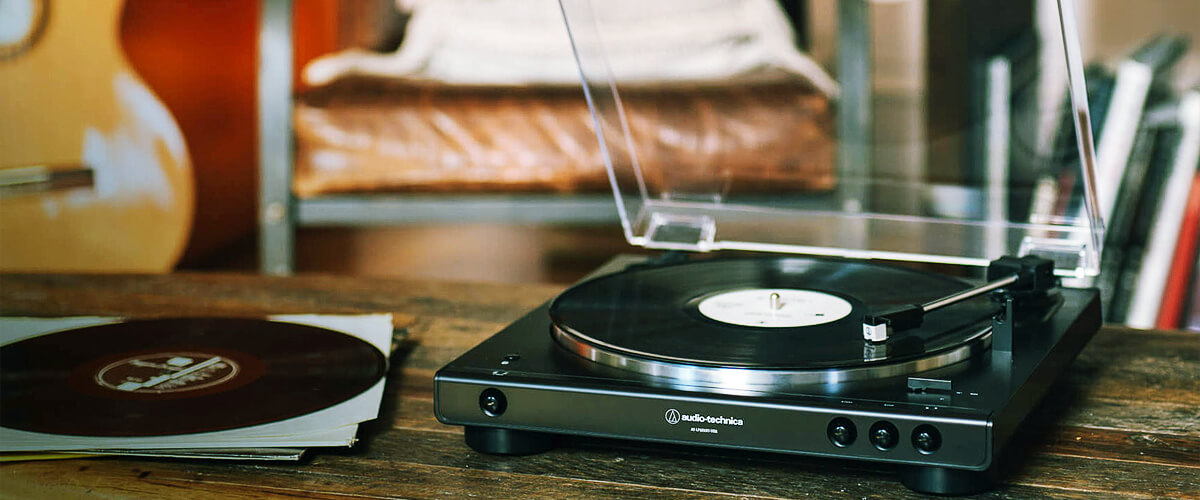
They became popular in the mid-twentieth century, equipped with automated features that simplify the process of playing vinyl records. These turntables are designed to make the playback experience more convenient and user-friendly, particularly for those who may not be familiar with manual turntable operation.
Types of automatic turntables
Such models come in different types based on the level of automation they offer and the specific features they include:
- Semi-automatic. They require some manual intervention to start the playback, but they automatically handle the return and stop functions.
- Fully automatic. These turntables handle both the start and stop functions automatically. To play a record, the user simply presses a button or lever to start the playback process.
- Direct drive automatic. They use a direct connection between the motor and the platter, offering precise and stable speed control.
- Belt-drive automatic. These models use a belt to transfer power from the motor to the platter. These turntables tend to be quieter.
- Fully automatic linear tracking. These utilize a linear tonearm that moves parallel to the record’s grooves. They handle the cueing, tracking, and return functions automatically.
- Multi-play automatic. They are equipped with mechanisms to stack several records, and once one record is finished, the turntable will automatically drop and play the next record in the queue.
How an automatic turntable works
It operates using mechanical and motorized components to automate certain functions of the vinyl record playback process. The main components and the typical steps of how an automatic turntable works I described as follows.
When the user activates the play function, the automatic turntable engages the motor, and the platter begins to rotate at the selected speed. Some automatic turntables may have additional controls for speed selection (33 1/3 RPM, 45 RPM, or 78 RPM, depending on the record being played).
In some automatic turntables, there is an automatic cueing mechanism. The tonearm lifts and moves to the outer edge of the record, guided by mechanical levers or sensors. Once the tonearm reaches the outermost grooves of the vinyl, it lowers down automatically onto the record, precisely aligning itself with the beginning of the track.
Towards the end of the record, there is the run-out groove. Automatic turntables are designed to detect this groove using mechanical levers or optical sensors. When the tonearm reaches the run-out groove, the turntable’s auto-stop mechanism is triggered, lifting the tonearm off the record surface. After the tonearm is lifted, the turntable’s auto-return mechanism comes into play. Once the tonearm is back at its resting position, the turntable’s motor stops spinning the platter, completing the playback process.
Pros of automatic turntables
Let’s find out what makes them so appealing to a wide range of users. I’ve detected some of the key pros of automatic turntables:
- Convenience. With an automated start, stop, and tonearm return functions, users can simply press a button to begin playing a record.
- User-friendly operation. The automated features simplify the playback process, requiring minimal effort from the user.
- Reduced risk of damage. The automated cueing and tonearm return functions help minimize the risk of mishandling the tonearm and stylus, which can damage the record’s grooves or the needle itself.
- Preserves vinyl records. The auto-stop feature ensures that the tonearm is lifted from the record before reaching the run-out groove, preventing excessive wear on the stylus and reducing the risk of damage to the record’s end.
- Safety: They lift the tonearm and stop the rotation when the record is done, reducing the chances of accidentally scratching the record or damaging the stylus.
- No reliance on the external preamp. A built-in phono preamp eliminates the need for users to purchase it separately.
- Suitable for DJs. Some automatic turntables, especially direct-drive models, are popular among DJs due to their convenience, precise speed control, and automatic features.
Cons of automatic turntables
As usual, it’s impossible to avoid reviewing some drawbacks that may be important to consider before making a purchase of an automatic turntable, which are the next:
- Limited upgrade potential. They come with integrated components, which may limit the ability to upgrade individual components for improved sound quality.
- Mechanical complexity. Repairs and replacements of these components may be more challenging and costly.
- Less precise cueing. Automatic turntables rely on mechanical levers or sensors, which might not be as accurate as the human touch.
- Dependence on power. Automatic turntables require electricity to power the motor and automation mechanisms.
- Cost. High-quality automatic turntables with advanced automation features can be expensive. Some of the top-tier models with cutting-edge technologies may come with a higher price tag than comparable manual turntables.
Making a choice: factors to consider when buying a turntable
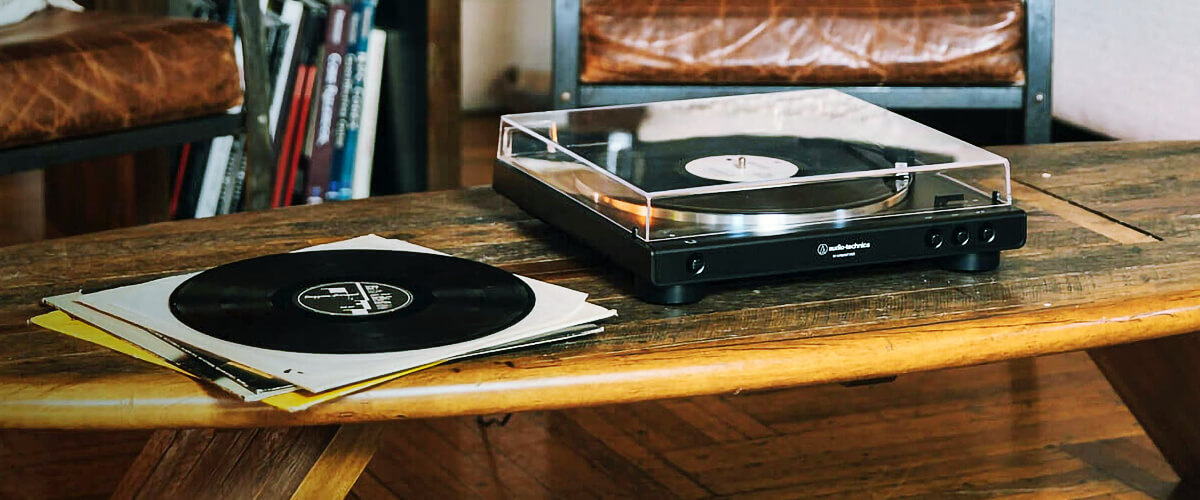
There are several essential factors to consider to ensure you get the optimal device for your needs and preferences. I’d recommend keeping in mind these key factors when thinking about automatic vs manual record player:
Determine your budget. Decide how much you are willing to spend on a turntable. Your budget will help narrow down your options and prevent you from overspending.
Identify your listening priorities. Consider what aspects of the listening experience are most important to you. Do you prioritize sound quality, convenience, aesthetics, or a combination of these factors?
Manual vs. Automatic. Decide whether you prefer the more involved, hands-on experience of a manual turntable or the convenience of an automatic turntable with automated features.
Sound quality. If sound quality is your top priority, consider investing in a high-quality manual turntable with a good tonearm, cartridge, and stylus. Look for features like vibration isolation and a heavy, stable platter.
Space and setup. Consider the available space in your listening area and the compatibility of the turntable with your existing audio equipment (speakers, amplifiers, receivers).
Genres of music. Think about the types of music you mostly listen to. Some turntables may perform better with certain genres, so choose one that suits your musical preferences.
Future upgrades. Determine if you are open to upgrading and customizing your turntable in the future. If so, look for a model with easy cartridge and stylus replacement or adjustable settings.
DJing and mixing. If you’re interested in DJing or mixing, consider a direct-drive turntable known for its stable speed control and durability.
We are supported by our audience. When you purchase through links on our site, we may earn an affiliate commission at no extra cost to you.
Our newsletter
* We will never send you spam or share your email with third parties

![Best Turntables Under $100 [Reviewed and Tested]](https://righttechadvice.com/wp-content/uploads/2023/09/best-turntable-under-100-300x150.jpg)
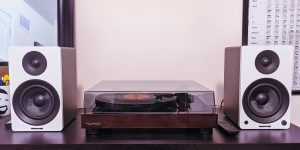
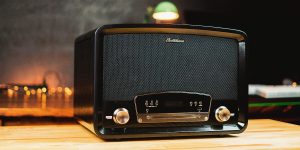
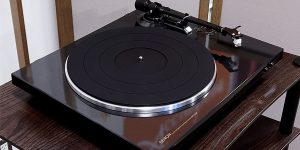
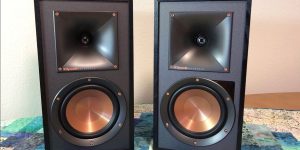
![Best Speakers for Turntable [The Ultimate Speaker Guide]](https://righttechadvice.com/wp-content/uploads/2024/02/best-speakers-for-record-player-300x150.jpg)
